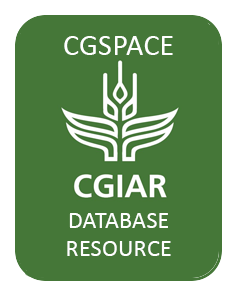The climate-smart agriculture (CSA) concept reflects an ambition to improve the integration of agriculture development and climate responsiveness. It aims to achieve food security and broader development goals under a changing climate and increasing food demand.
CSA initiatives sustainably…
The climate-smart agriculture (CSA) concept reflects an ambition to improve the integration of agriculture development and climate responsiveness. It aims to achieve food security and broader development goals under a changing climate and increasing food demand.
CSA initiatives sustainably…
The climate-smart agriculture (CSA) concept reflects an ambition to improve the integration of agriculture development and climate responsiveness. It aims to achieve food security and broader development goals under a changing climate and increasing food demand.
CSA initiatives sustainably…
Biodiversity continues to decline in the face of increasing anthropogenic pressures such as habitat destruction, exploitation, pollution and introduction of alien species. Existing global databases of species’ threat status or population time series are dominated by charismatic species. The…
The objective of this paper is to explore residential location preferences and how they are related to travel behavior. The literature focuses on the preferences in relation to physical and demographic aspects, such as land uses, facilities, transportation facilities, transportation services,…
This is the first paper that estimates the global land use change impact of growth of the bioenergy sector. Applying time-series analytical mechanisms to fuel, biofuel and agricultural commodity prices and production, we estimate the long-rung relationship between energy prices, bioenergy…
Food First Backgrounder, Spring 2014, Vol. 20, No. 1
Introduction: Land, Race and the Agrarian Crisis
The disastrous effects of widespread land grabbing and land concentration sweeping the globe do not affect all farmers equally. The degree of vulnerability to these threats is…
The AgriTech Toolbox enables researchers and policymakers to examine how alternative agricultural practices and technologies can impact farm yields, food prices, natural resource use, hunger, malnutrition, land use and global trade in 2050, when climate change impacts may be severe. As a result…
The International Food Policy Research Institute (IFPRI) business-asusual projections of agricultural supply and demand anticipate a rise in food prices of most cereals and meats, reversing long-established downward trends. Between 2005 and 2050, food prices for maize, rice, and wheat are…
This 2012 Global Food Policy Report is the second in an annual series that provides an in-depth look at major food policy developments and events. Initiated in response to resurgent interest in food security, the series offers a yearly overview of the food policy developments that have…
This 2012 Global Food Policy Report is the second in an annual series that provides an in-depth look at major food policy developments and events. Initiated in response to resurgent interest in food security, the series offers a yearly overview of the food policy developments that have…







